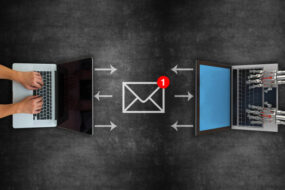Small business owners:

Selling B2B SaaS (software as a service) to SMBs (small and medium-sized businesses) or small business owners is a unique challenge with immense potential rewards. Small business owners represent a significant market segment, offering vast growth opportunities. However, capturing their attention requires a strategic approach emphasising value, simplicity, and reliability. This article will explore effective strategies for selling B2B SaaS to small business owners, focusing on engagement, benefits, applications, and overcoming common challenges.
Why target small business owners?
Small business owners account for a substantial portion of the business landscape. They are agile, open to innovation, and constantly seeking solutions that enhance efficiency and productivity. By targeting small business owners, SaaS providers can tap into a dynamic market with high potential for long-term customer relationships.
Small business owners have key characteristics:
i. Budget-conscious: SMBs often operate with limited budgets, making cost-effective solutions attractive.
ii. Time-sensitive: They require quick implementation and immediate results.
iii. Value-driven: SMBs seek clear, tangible benefits that directly impact their operations.
Read more: How Do You Sell B2B SaaS in Today’s Competitive Market?
How to Effectively Engage Small Business Owners:

1. Crafting a Compelling Value Proposition
A strong value proposition is crucial to capturing the interest of small business owners. It should communicate the benefits of your SaaS solution in simple, relatable terms.
i. Highlight Cost Savings: Emphasise how your solution can reduce expenses, streamline operations, and improve profitability.
ii. Showcase Efficiency Gains: Demonstrate how your SaaS can save time and resources, allowing small business owners to focus on core activities.
iii. Stress Ease of Use: Ensure that your platform is user-friendly, with minimal training required.
2. Utilising personalised marketing
Personalisation can significantly enhance engagement. Tailor your messaging to address the specific pain points and needs of small business owners in various industries.
i. Segment Your Audience: Divide your target market into segments based on industry, size, and specific challenges.
ii. Create targeted content: develop case studies, whitepapers, and blog posts that resonate with each segment.
iii. Leverage Email Campaigns: Use personalised email marketing to nurture leads and maintain ongoing communication.
Highlighting the Benefits of Your B2B SaaS to Small Business Owners:
Key Benefits to Emphasise:
When selling to small business owners, it’s essential to focus on the benefits that matter most to them. Here are some key points to highlight:
i. Scalability: Explain how your SaaS solution can grow with their business, providing value at every stage of development.
ii. Flexibility: Emphasise the customisable nature of your software, allowing small business owners to tailor it to their unique needs.
iii. Security: Assure potential clients of the robust security measures in place to protect their data.
iv. Support: Emphasise the availability of dedicated customer support to help with any issues or questions.
Why B2B SaaS Should Demonstrate ROI to Small Business Owners:

Small business owners need to see a clear return on investment. Provide tangible evidence of the impact your SaaS can have on their business.
i. Case Studies: Share success stories from similar businesses that have benefited from your solution.
ii. Metrics and Data: Use statistics and data to quantify the benefits, such as percentage increases in efficiency or reductions in costs.
iii. Testimonials: Include quotes from satisfied customers to build credibility and trust.
Read more: How User Communities Can Boost Software Marketing
Overcoming Common Challenges for B2B SaaS and Small Business Owners:
1. Addressing budget constraints
Budgeting is a primary concern for small business owners. To address this, offer flexible pricing models that cater to different financial capacities.
i. Tiered Pricing: To accommodate businesses of all sizes, provide various pricing tiers with different features.
ii. Offer a free trial period to allow small businesses to experience the value of your product before committing.
iii. Discounts and Promotions: To attract new customers, periodically offer reductions or promotional rates.
2. Simplifying onboarding and implementation
SMBs often lack the resources for complex implementations. Simplify the onboarding process to ensure a smooth transition.
i. User-Friendly Interface: Design your software with an intuitive interface that requires minimal training.
ii. Comprehensive Training: Ensure that training materials and support are clear and accessible.
iii. Seamless Integration: Ensure your SaaS integrates easily with existing systems and workflows.
3. Building trust and credibility
Trust is crucial in the SMB market. Establishing credibility can set your SaaS apart from competitors.
i. Transparent Communication: Be open about your product’s capabilities and limitations.
ii. Customer Reviews and Ratings: Encourage satisfied customers to leave positive reviews and ratings.
iii. Industry Certifications: To demonstrate the quality and security of your solution, obtain relevant certifications.
How B2B SaaS Should Utilise Effective Sales Strategies for Small Businesses:
1. Consultative Selling
Adopt a consultative selling approach to build relationships and understand the unique needs of each SMB.
i. Needs Assessment: Conduct thorough needs evaluations to identify the specific challenges and goals of potential clients.
ii. Tailored Solutions: Offer customised solutions that address the identified needs and provide clear value.
iii. Ongoing Engagement: Maintain regular communication to ensure continued satisfaction and address any evolving needs.
2. Leveraging digital channels
Digital channels provide cost-effective ways to reach and engage SMBs.
i. SEO and Content Marketing: Optimise your website and create valuable content to attract organic traffic.
ii. Social Media: Use social media platforms to share content, engage with prospects, and build your brand.
iii. Webinars and Online Demos: Host webinars and live demos to showcase your product and answer questions in real time.
What B2B SaaS Can Do to Maximise Customer Retention:

1. Providing excellent customer support
Exceptional customer support can significantly impact customer retention.
i. 24/7 Support: Provide round-the-clock assistance to resolve issues as soon as possible.
ii. Dedicated Account Managers: Assign account managers to provide personalised assistance.
iii. Schedule regular check-ins to ensure customer satisfaction and address any concerns.
2. Encouraging Feedback and Improvement
Actively seek feedback from your customers to improve your products and services.
i. Surveys and Feedback Forms: To gather insights, use surveys and feedback forms.
ii. Customer Advisory Boards: To involve key customers in product development and establish advisory boards.
iii. To improve your SaaS solution, implement regular updates based on customer feedback.
Read more: The Secret Weapon of Successful Software Startups
Conclusion:
Selling B2B SaaS to SMBs requires a strategic approach emphasising value, simplicity, and trust. By understanding the unique needs of SMBs and tailoring your sales and marketing efforts accordingly, you can effectively engage this dynamic market segment. Highlight the benefits, address common challenges, and provide exceptional support to build long-lasting customer relationships.










